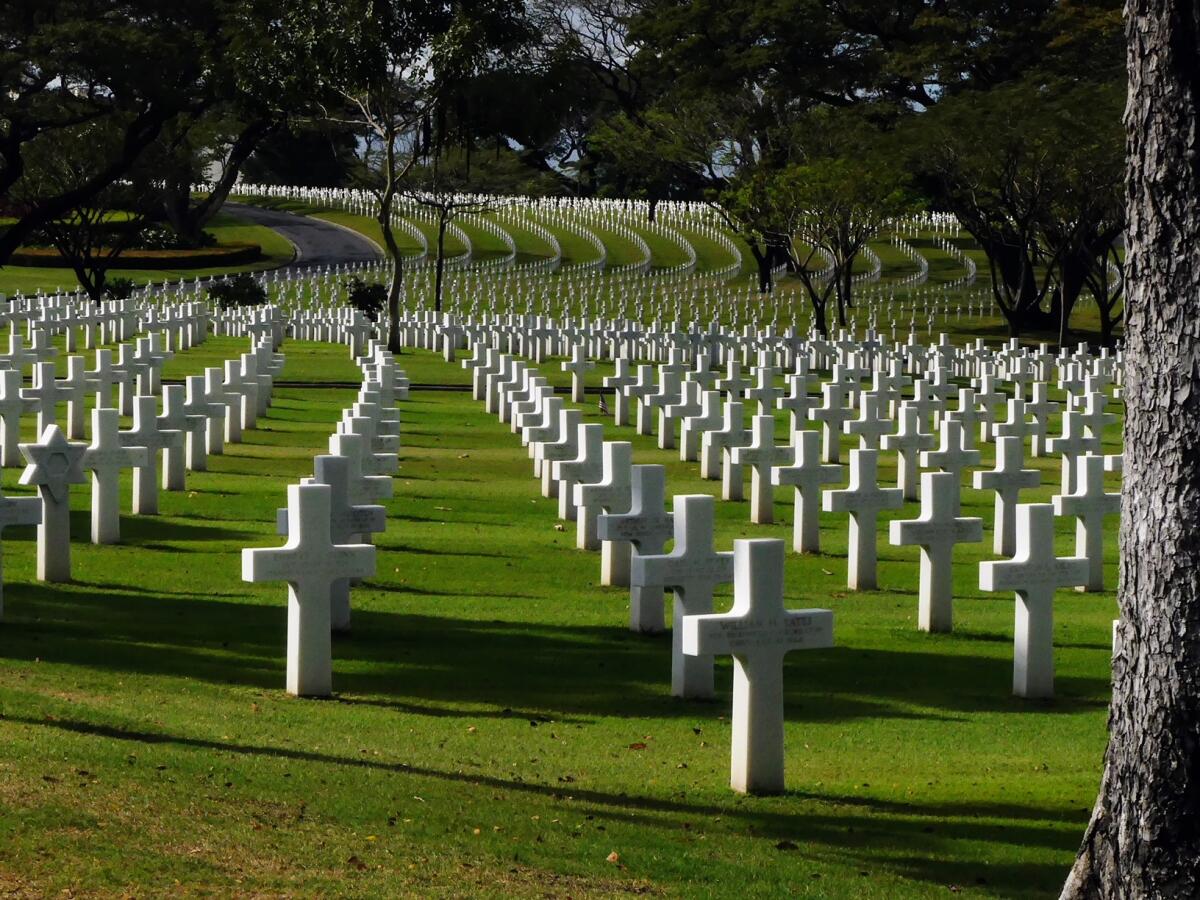They survived the 1945 Battle of Manila or had family who did. Read their letters

- Share via
Every now and then, I am struck by the stories of hardship and struggle that many readers carry with them in their daily lives. These are often tales told in letters based on firsthand experience — for example, of botched abortions before 1972, or from the survivors of gun violence. Occasionally we’ll hear from Holocaust survivors, moved to tell of the atrocities they witnessed as their numbers grow smaller with time.
This week, we heard from another group of readers affected by the horrors of World War II eight decades ago. They wrote to The Times after reading a Memorial Day article by Bob Drogin about the 1945 liberation of Manila, a largely forgotten battle for the capital of the Philippines in which 1 in 10 of the city’s civilian residents died.
But these readers — either the descendants of survivors or survivors themselves — hadn’t forgotten anything, and most expressed appreciation for The Times’ coverage. Reading their letters is a reminder of the history and trauma carried by so many of us, often in silence.
————
To the editor: I am one of the remaining few who experienced the Battle of Manila in 1945. Seeing its acknowledgment in The Times was unnerving.
Manila had lost telephones, gas and electricity. Parts of the water system failed. There were no police or firefighters. Hospitals could not treat patients. The city was starving.
Japanese forces included those from ships sunk by U.S. bombs, many of them Korean. They knew they were going to die. Their commanders had virtually no means of communicating with them as the Americans shelled the battleground without regard for civilian safety.
People didn’t know how to protect themselves. Many gathered at a college campus, where men were separated from women and children, and were then lined up to be machine-gunned but suddenly ordered to return home. My aunt was told to flee by a Japanese lieutenant. Her area became the scene of many atrocities.
Remembering this still brings about post-traumatic stress. It’s inescapable.
Allen J. Manzano, Carlsbad
..
To the editor: Your article brought back memories of tales heard from relatives who had firsthand experience and witnessed the atrocities and cruelty of war.
My grandfather was an officer of the Philippine army who was forced to leave his home and family to evade the Japanese soldiers hunting to execute him.
My father was a member of the United States Army in the Far East and was in the Bataan Death March. He survived by rolling into a ditch full of dead soldiers and pretending to be dead too. Many others described the atrocities they witnessed.
The people of the Philippines were caught in a horrific crossfire between U.S. and Japanese forces. The tales described by Drogin were familiar as well as painful. The past failure to recognize and document the stories for posterity is disappointing.
Thelma Ordonez, Arcadia
..
To the editor: Bravo for Drogin’s very interesting story on the Battle for Manila.
My uncle was a 19-year old Marine stationed in the Philippines in 1942 when the fortress on Corregidor island was captured by the Japanese. He spent much of World War II as a prisoner of war.
Fortunately, he was not subjected to the Bataan Death March, but he and other Corregidor prisoners were routinely tortured and beaten. He rarely talked about it.
Late in life, he revealed that he had escaped the POW camp and spent a year in the mountains fighting with guerrillas. I had never heard a story like that and long wondered if it was really true. Then I read Stephen Ambrose’s book, “The Pacific,” which told the tale of several American POWs who escaped, fought as guerrillas and were later evacuated to Australia.
My uncle returned home after the islands were liberated. He was treated at the Navy hospital in Norco, attended UCLA on the GI Bill and made a career in aerospace working on missiles and satellites. And, like so many veterans, he took most of his war stories with him when he died in 1990.
Willard Gleeson, Glendale
..
To the editor: For eight days and nights in February 1945, my father guarded the gates of Santo Tomas University in Manila with his platoon. They had no sleep, no cooked food and only rations to eat. Artillery fire rained continuously as they secured the university.
Against orders, he compassionately let wounded civilians through the gates for medical attention. He was only 23 and was awarded the Bronze Star for this heroic service. I cried reading Drogin’s informative article and then re-reading my father’s memoir about the events.
What a shame if many in Manila blame U.S. forces for the “unnecessary destruction of their city,” as Drogin writes. The innate savagery of war should not be blamed on the liberators who risked their lives to save the starving captive people.
Ellen McCracken, Santa Barbara






